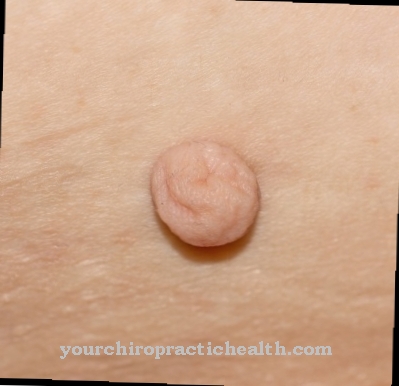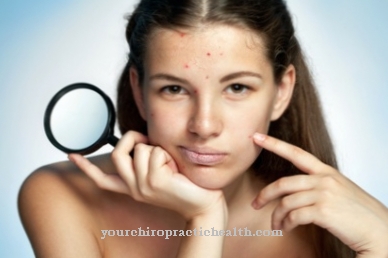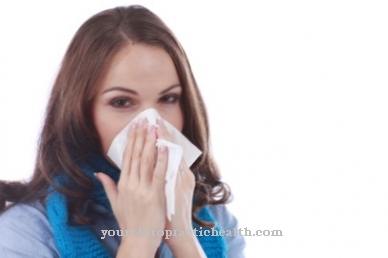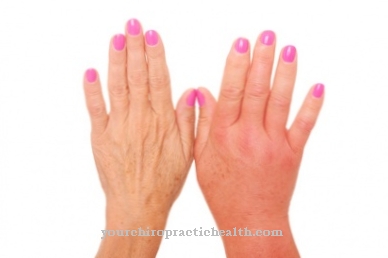Freckles are a build-up of concentrated melanin that is most often seen in people with lighter complexions. Triggered by exposure to the sun, freckles appear randomly and are basically not to be regarded as a serious disease.
What are freckles?

There are two different types of freckles. Simple freckles (ephelids) are round spots that vary in color from reddish to yellow to black and are typically around 2-3mm in size.
Sunburn freckles (lentigines) are often darker, have irregular jagged edges, and can be larger than usual. These include the "liver or age spots", which are incorrectly attributed to problems with the liver. With age, these freckles can begin to grow. These benign skin growths are known as seborrheic keratoses.
The freckles spread with increased exposure to the sun on areas of the skin such as cheeks, nose, arms, shoulders and are usually uniform in color. Freckles are less common in babies and toddlers, but more common from the onset of puberty.
causes
Freckles are an accumulation of the darker pigment melanin and are not due to an increase in the total number of melanocytes (pigment-producing cells). Natural sunlight and the artificial light from tanning beds contain ultraviolet radiation.
If this hits the outer layer of the skin (epidermis), the melanocytes produce the pigment melanin at increased speed in order to protect the skin from the radiation to a certain extent (sunburn). People with blond or red hair, light eyes and light skin are particularly susceptible to the harmful effects of UV rays.
Regardless of skin color, however, freckles are caused by the uneven distribution of the pigment melanin in the skin. Various studies on pairs of twins with a remarkable similarity in the total number of freckles suggest that the tendency to freckles is inherited.
Diseases with this symptom
- Age spots
- Skin cancer
- sunburn
Diagnosis & course
Essentially, freckles do not pose any health risks and are typically not cancerous. Pathological accumulations of freckles are described by the diseases xeroderma pigmentosum and neurofibromatosis. So-called malignant freckles (lentigo maligna) describe a superficial skin cancer that forms on the faces of older people who have long been exposed to strong sunlight.
A simple skin biopsy can help diagnose lentigo maligna. Melanomas are larger, darker, and more uneven in color and shape. The most common form of skin cancer is what is known as basal cell carcinoma: it is usually pearly, pink or reddish in color and can bleed easily.
A pigmented basal cell carcinoma can be mistaken for a freckle because of its dark color. In principle, it is advisable to consult a doctor or dermatologist in the case of uncertain pigment spots in order to rule out the diagnosis of skin cancer.
Complications
Freckles are not a disease, so there is no need to treat freckles. There is also no method to permanently get rid of the freckles. In some cases the affected people are dissatisfied and do not find them attractive.
This can lead to decreased self-esteem and further psychological problems or depression. However, this only occurs in very rare cases, as freckles are currently considered fashionable. It often happens that the freckles become stronger or fade again in connection with the sun exposure.
This process is also completely normal and depends on the melanin content in the skin. This changes with stronger sunlight, so that the freckles become stronger and fade again in winter. In the case of freckles, there is no need to see a doctor. There is also no treatment for the symptom.
If a person's freckles don't like it, they can be covered with make-up. Often the freckles cover not only the face, but also the shoulders or arms. The freckles are completely natural in these areas too, so that no treatment is necessary here either. Since there is no treatment for freckles, no complications can arise.
When should you go to the doctor?
There is no need to see a doctor for freckles. This phenomenon is a common symptom, which is not medically harmful and does not lead to any complications or complaints. It is also perfectly normal for the number of freckles to change in the summer months and winter months and not remain constant. Especially in summer, freckles can appear and cover the body.
Treatment with a doctor is not possible directly. However, the patient should be careful not to confuse the freckles with a birthmark. Usually, moles should be treated and examined when they change. The change can occur either in shape, size or color. Should the patient notice any of these changes, a doctor should be consulted. As a rule, a quick and uncomplicated treatment is possible so that there are no further complaints or complications.
If the person concerned is dissatisfied with the freckles and thus suffers from reduced self-esteem, it is possible to treat the freckles cosmetically. A beautician or a dermatologist can be visited. In many cases, however, cosmetic items can also be used to cover up the freckles.
Doctors & therapists in your area
Treatment & Therapy
There are now several safe and effective ways to lighten or reduce the appearance of freckles. Multiple treatments or a combination of applications are often required to achieve long-term results. Products with hydroquinone and kojic acid can be purchased with (hydroquinone concentration over 2%) and without a prescription.
If used consistently over a longer period of time and ideally combined with sun protection creams, such products can lighten freckles. Other bleaching agents are so-called retinoid-containing creams such as tretinoin (vitamin A acid, retin-A), tazarotene or adapalene. In doctors' offices, frozen nitrogen is sometimes used to freeze certain freckles (cryotherapy).
Laser treatment is safe and effective. Like cryosurgery, this procedure has a high success rate with little risk of scarring or skin discoloration. Light treatments have also proven to be a successful treatment method. Chemical peels can also be used for irregular pigmentation of freckles.
Outlook & forecast
Freckles are not a health hazard. For this reason, freckles are also not given special treatment. They are a common symptom for many people and can occur due to increased exposure to the sun. The number of freckles often increases, especially in summer, and decreases accordingly in winter. There is no need to see a doctor with this symptom.
If the patient with the freckles does not find himself attractive, there is usually a reduced self-esteem. These thoughts can lead to mental health problems and should be treated by a psychologist.
Medical treatment for the freckles themselves is not possible. However, they can be covered with make-up and thus covered with care products. In society, however, freckles are accepted and not perceived as particularly unusual.
The freckles are genetically predisposed in many people and can therefore also appear all over the body without specific regions being preferentially covered. Whether the freckles will remain on a person through life or will disappear over time cannot be universally predicted.
prevention
Fair-skinned people, who are more prone to pigment spots and sunburn, are in any case at a higher risk of skin cancer. Since you cannot influence your own genetic preference for freckles, suitable measures should be taken from childhood to avoid strong sunlight. This includes sunscreen with a sun protection factor of 30 or more, wearing head protection with a wide rim, wearing long but airy clothing and avoiding direct sun at noon.
You can do that yourself
Self-help is usually not possible with freckles. However, this symptom is not a medical condition that could be dangerous to the body. For this reason, the freckles do not need to be treated either.
For many people, the freckles appear especially in the summer when there is strong sunlight. For this reason, the affected areas of the skin must be specially protected. Here it is advisable to cover these areas with clothing and always apply enough sun protection. This also prevents sunburns. Direct sunlight should also be avoided. It is common for the freckles to subside a little during the winter months. However, this behavior can differ in different people.
If the patient is dissatisfied with the freckles or feels uncomfortable, cosmetic care products can be used to touch them. Here you can find covering creams and make-up in the drugstore or pharmacy. If you have psychological problems or a reduced self-esteem due to freckles, talking to family, friends or your own partner often helps. With freckles, there are no further symptoms or complications and the symptom is harmless. However, the patient should also keep an eye on moles and have them examined by a doctor immediately if there are any changes.




.jpg)



















.jpg)



